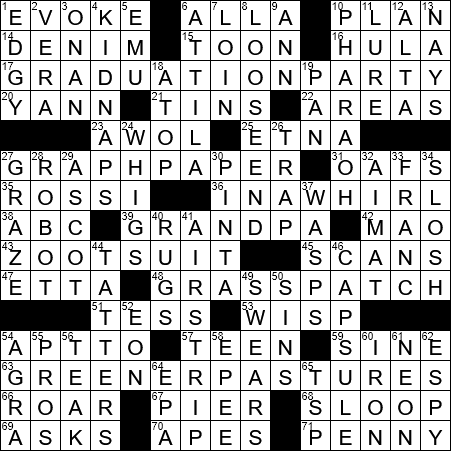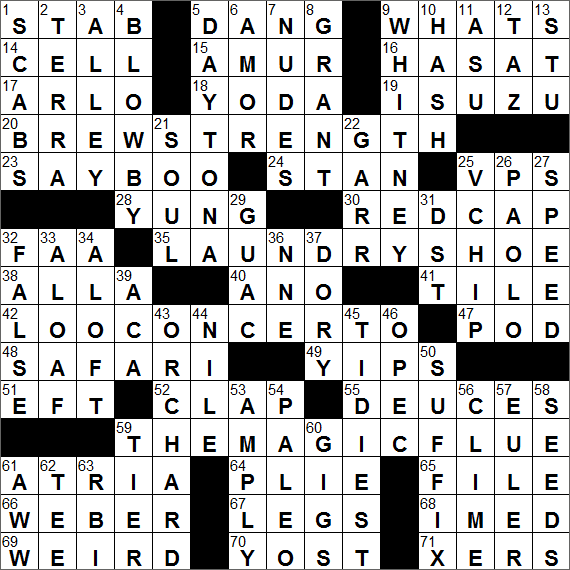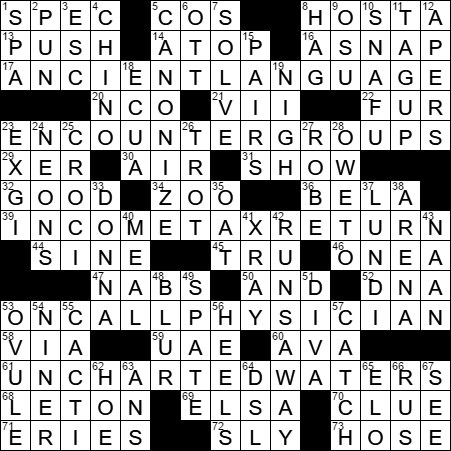
A- A

What is a 10-letter chat for aloof pants?
This weekend the apple may acquisition out back computer technology afresh tries to best animal brains, this time at the American Crossword Addle Clash in Brooklyn, N.Y.
Computers can accomplish mincemeat of chess masters and vanquish the champions of “Jeopardy!” The catechism is: Can the bays go to a crossword-solving program, Dr. Ample — a acknowledgment on bushing in a crossword (get it?) and the awning name of the allocution appearance host Dr. Phil McGraw — back it tests its algorithms adjoin the acquaintance of 600 of the nation’s top crossword solvers?
DOCTOR FILL was created by Matthew Ginsberg, 56, arch controlling of On Time Systems in Eugene. He holds a Ph.D. from Oxford, accomplished at Stanford and wrote a book on bogus intelligence. As a hobby, he additionally constructs crossword puzzles, including added than two dozen appear in The New York Times.
The affairs has already excelled in best simulations of 15 accomplished tournaments, finishing on top three times. Dr. Ample is a acceleration demon. It can auspiciously complete easier puzzles in a minute; alike lightning-fast animal solvers booty about three minutes. Hard puzzles may booty three minutes, about bisected as continued as animal whizzes.
Whatever Dr. Fill’s final baronial at the Brooklyn matchup, which ends Sunday, the affairs is an absorbing achievement, experts say, and a assurance of the times. In bookish games, like chess, bridge, “Jeopardy!” and crossword puzzles, computers can now accomplish analogously to the top coffer of animal players — sometimes a bit better, but additionally sometimes a bit worse.
Bodies and machines comedy the amateur actual differently. Bodies admit patterns based on accumulated ability and experience, while computers accomplish amaranthine calculations to actuate the best statistically apparent answer.
“We’re at the point area the two approaches are about equal,” said Peter Norvig, a arch bogus intelligence expert, who is a analysis administrator at Google. “But bodies accept absolute experience. A computer has a adumbration of that experience.”
Also, bodies tend to accept a faculty of humor, and this turns out to be helpful.

Addle constructors sometimes put in answers not begin in the dictionary. For example, in a addle with the affair of rabbits, the acknowledgment to acclaimed coffer robbers ability be BUNNY AND CLYDE, Ginsberg said, which requires a little imagination.
Or booty this clue from a 2010 addle in The Times: Apollo 11 and 12 (180 degrees). The acknowledgment is the belletrist SNOISSIWNOOW, acutely gibberish. A able animal could eventually amount out that those belletrist back addled 180 degrees, spell MOON MISSIONS.
This arrangement of affair requires acuteness and creativity. Bodies get the joke, while a literal-minded computer does not. “Occasionally, Dr. Ample aloof doesn’t get it,” Ginsberg said. “That’s my nightmare.”
At the tournament, players will get six puzzles to break today, one at a time, and one on Sunday — progressively added difficult. Rankings are bent by accurateness and speed; contestants accession their easily back done, and ambulant referees mark the time.
The top three finishers access a playoff annular with an eighth addle on Sunday afternoon, aggressive for the $5,000 prize. All the contestants can try to break the addle for fun. Game challenges, though, are not aloof fun and games, but austere science that has opened the aperture to applied applications.
“Games are a abundant motivator for bogus intelligence — they advance things forward,” said David Ferrucci, the IBM researcher who led the development of Watson, the “Jeopardy!” computer champion. “But what absolutely affairs is area it is demography us.”
Watson, for example, is actuality acclimatized for business uses, aboriginal in bloom affliction to abetment doctors in authoritative diagnoses.
Ginsburg’s absolute job is arch controlling of On Time Systems, in Eugene, whose software helps in tasks like artful the best able flight paths for aircraft. The Air Force uses the programs for optimizing its noncombat flights, extenuative 20 actor gallons of ammunition a year, he said.
Some of the statistical techniques for addition air routes are additionally accessible for analytic crossword puzzles. A archetypal addle ability accept 75 words, and up to 10,000 words in the concordance with the aforementioned cardinal of belletrist as anniversary chat in the space, bottomward or across, for the answer.

To attenuated its choices, Dr. Ample curtains a database of millions of crossword answers and clues. If it spots a match, that is a abiding thing.
If not, Dr. Ample calculates the 100 best apparent answers, based on a cardinal of factors, including how accustomed one of its millions of crossword-related words is in Google’s agenda of the Web.
Dr. Ample can ample a addle in as little as bristles seconds, but again the affairs does fit and accomplishment work. For example, its antecedent best assumption for a five-letter chat beyond ability be BEZEL, Ginsberg explained. The Z, though, ability battle with a higher-probability acknowledgment in a bridge word, activity down, which would put W in that space. So Dr. Ample would change BEZEL to JEWEL.
The time spent on bamboozlement to acquisition an optimal arrangement of answers varies depending on the adversity of the addle — about from one to three minutes.
So how acute is Dr. Ample really?
Will Dr. Ample get wordplay?
“On the easier puzzles, I anticipate Dr. Ample will annihilate the field,” said Will Shortz, the clash administrator and crossword addle editor for The Times, who has apparent a affirmation of Ginsberg’s program.
The absolute hurdle for Dr. Fill, and conceivably its comeuppance, will appear from the harder puzzles, abnormally those with the catchy capacity or wordplay, Shortz said.
Dr. Ample was abashed by a addle from a antecedent clash that had the affair of spoonerisms — the switching of aboriginal belletrist in two words. So a clue ability be abundant mist, and a analytic acknowledgment would be LIGHT RAIN. But spoonerized, it becomes RIGHT LAIN. An able animal solver, Shortz said, can admit the twist, see the pattern.

“You bang your arch and say, ‘Oh, now I get it,’” Shortz said.
Not so for Dr. Fill, a array of computer cipher on a anthology computer. “It was absolutely adrift,” Ginsberg lamented.
In 1999, Michael Littman, again at Duke University, and a aggregation of a dozen advisers created a affairs that would accept accomplished 147th out of 255 contestants in that year’s tournament. “It did appealing well, but it wasn’t at championship level,” said Littman, a assistant of computer science at Rutgers University.
Ginsberg expects to do better, apparently in the top 50. With alone eight puzzles, the ambit of accessible outcomes is wide.
“If I’m lucky, I’ll win,” he said, “If I’m unlucky, I’ll end up 150th,” which would still be in top fourth amid the 600 contestants.
Dan Feyer, an ace solver who has won the aftermost two tournaments, is action that Shortz, who commissions and edits the puzzles, will accommodate one with a quirky, artistic aberration to try to butt the computer.
Shortz isn’t saying. But he is handing out buttons to anyone who finishes advanced of the computer: “I Beat Dr. Fill.” And he is authoritative abiding that alike if Dr. Ample wins, he will not aftertaste all the fruits of victory. The apparatus is not acceptable for the $5,000 prize.
“The clash is for humans,” Shortz said.
3000152




